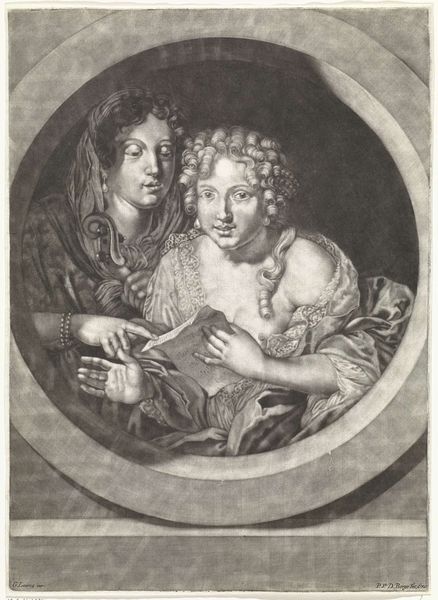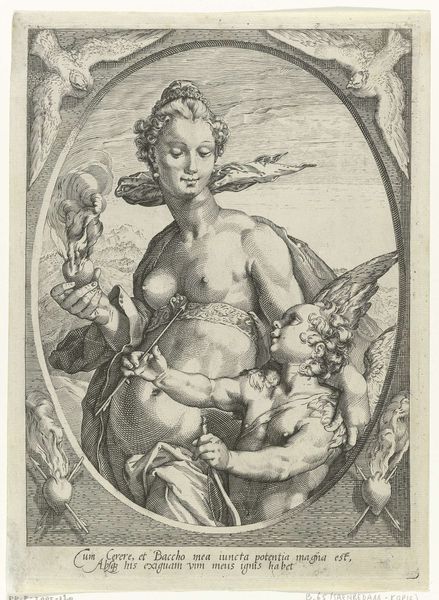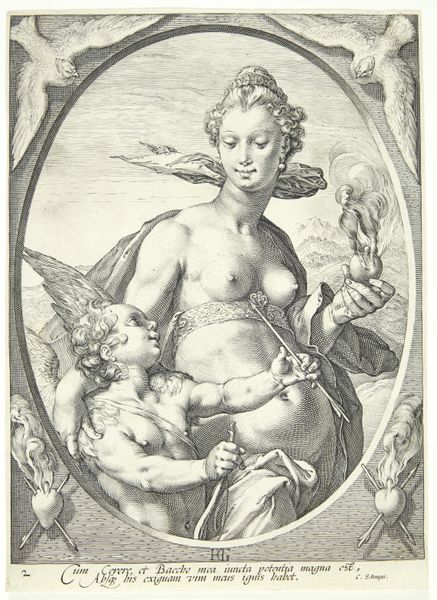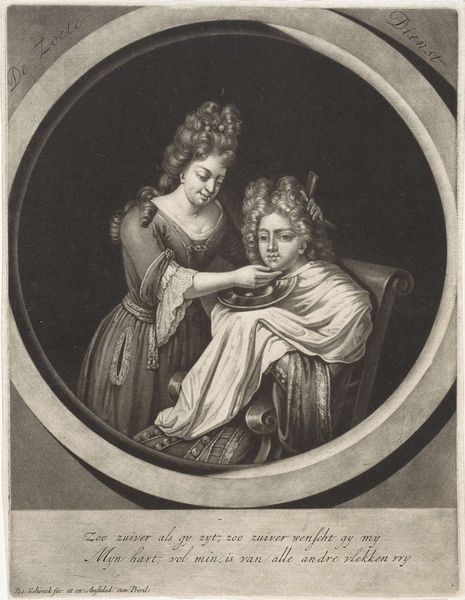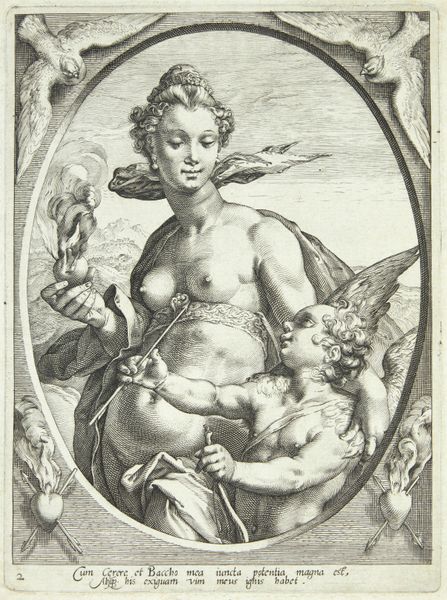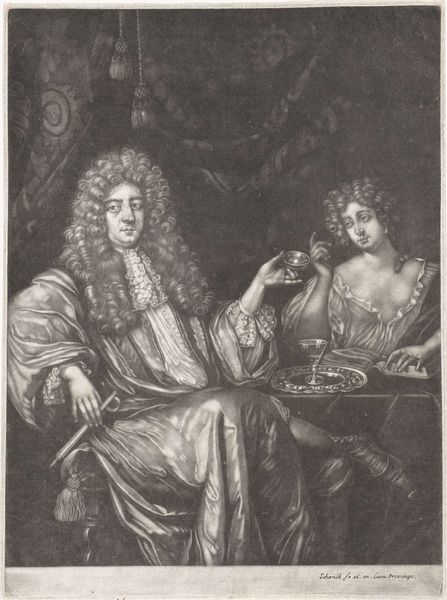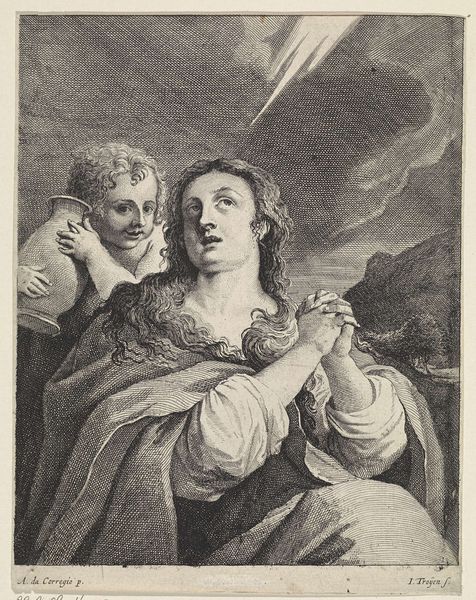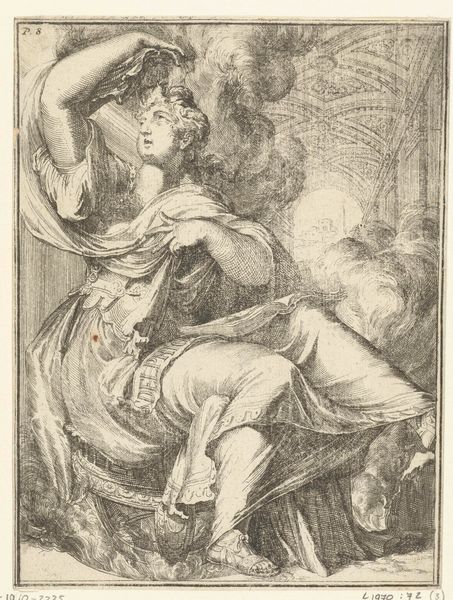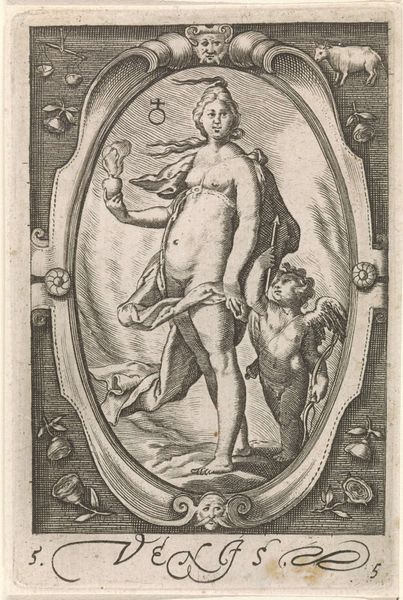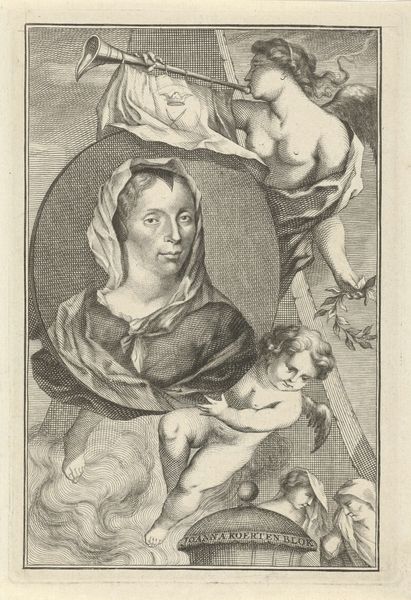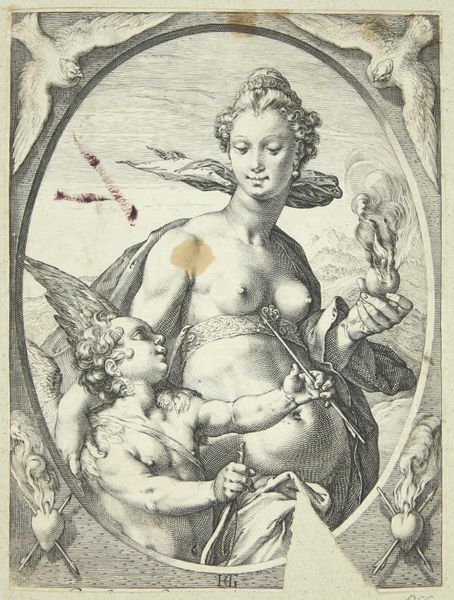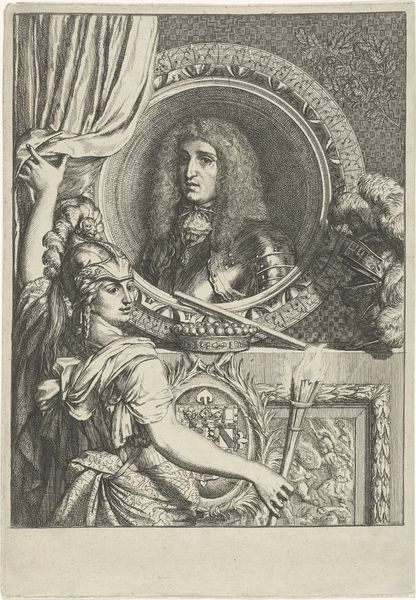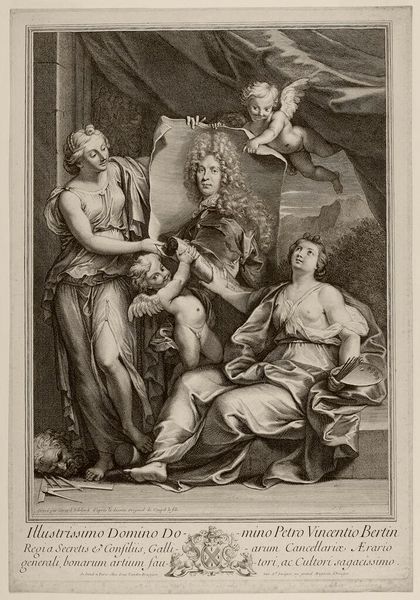
drawing, charcoal
#
portrait
#
drawing
#
baroque
#
pencil sketch
#
charcoal drawing
#
figuration
#
charcoal art
#
pencil drawing
#
line
#
genre-painting
#
charcoal
#
charcoal
#
pencil art
Dimensions: height 365 mm, width 264 mm
Copyright: Rijks Museum: Open Domain
Curator: Welcome. Before us is "Luitspeelster en kind," or "Lute Player and Child," attributed to Pieter van den Berge and estimated to be made between 1686 and 1737. It is currently housed here at the Rijksmuseum. Editor: Immediately, I'm struck by the shimmering quality of the fabrics, and the way light seems to catch and pool in those folds. What kind of charcoal or pencil produces that effect? It's remarkable. Curator: Indeed, van den Berge uses charcoal and pencil to build remarkable tonal depth, creating a sense of immediacy. This drawing exists within a tradition of portraiture aimed toward idealization of the sitter, a prevalent taste in Dutch Baroque society. Editor: And it speaks to the labour involved in producing such luxuries, both for the model and, indeed, the instrument itself, the lute. Can you tell me more about the significance of this instrument in this cultural setting? Curator: Certainly. In this era, music held a potent position, and a lute specifically was often associated with refinement and upper-class status, or an indication of cultivated interests among women. The image projects an aura of sophistication tied to leisure and learning. Editor: It’s intriguing how the material softness, so richly conveyed in the medium, can be interpreted. This detail pushes back on the often hardened representation of class dynamics by highlighting artisanal and aesthetic labour, even though those power dynamics persist nonetheless. Curator: Absolutely. And while these images perpetuated a visual language for the privileged, they are still fascinating historical records that provoke a great many nuanced interpretations, which makes them valuable pieces for us today. Editor: I find myself considering the social value placed on women displaying cultural skills during this period. These works of art can illuminate some of the nuances embedded within such objects, and this drawing prompts just such critical conversations. Curator: A worthwhile discussion to carry with us as we look ahead!
Comments
No comments
Be the first to comment and join the conversation on the ultimate creative platform.
